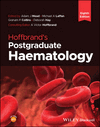Childhood acute lymphoblastic leukaemia
Sujith Samarasinghe
Department of Haematology, Great Ormond Street Hospital, London, UK
Search for more papers by this authorAnthony Moorman
Leukaemia Research Cytogenetics Group, Translational and Clinical Research Institute, Newcastle University, Newcastle upon Tyne, UK
Search for more papers by this authorAjay Vora
Department of Haematology, Great Ormond Street Hospital, London, UK
Search for more papers by this authorSujith Samarasinghe
Department of Haematology, Great Ormond Street Hospital, London, UK
Search for more papers by this authorAnthony Moorman
Leukaemia Research Cytogenetics Group, Translational and Clinical Research Institute, Newcastle University, Newcastle upon Tyne, UK
Search for more papers by this authorAjay Vora
Department of Haematology, Great Ormond Street Hospital, London, UK
Search for more papers by this authorAdam J Mead PhD, FRCP, FRCPath, FMedSci
Haematopoietic Stem Cell Biology Laboratory, Medical Research Council Molecular Haematology Unit, Medical Research Council Weatherall Institute of Molecular Medicine, University of Oxford, Oxford, UK
Search for more papers by this authorMichael A Laffan DM, MRCP, FRCPath
Department of Immunology and Inflammation, Faculty of Medicine, Imperial College London, London, UK
Search for more papers by this authorGraham P Collins DPhil, FRCP, FRCPath
Department of Haematology, Oxford Cancer and Haematology Centre, Oxford, UK
Search for more papers by this authorDeborah Hay DPhil, MRCP, FRCPath
Nuffield Division of Clinical Laboratory Sciences, Radcliffe Department of Medicine, University of Oxford, Oxford, UK
Search for more papers by this authorA Victor Hoffbrand MA, DM, FRCP, FRCPath, FRCP (Edin), DSc, FMedSci
Emeritus Professor of Haematology Honorary Consultant Haematologist
University College London, London, UK
Royal Free Hospital, London, UK
Search for more papers by this authorSummary
Acute Lymphoblastic Leukaemia is the predominant cancer of childhood with a high cure rate. Recent research has revealed a low penetrance genetic susceptibility for the condition and considerable phenotypic and genotypic heterogeneity. There is extensive clonal diversity at diagnosis which evolves under pressure of treatment with selection of resistant minor clones accounting for relapse. Stratification of treatment by phenotype, genotype and early treatment response combined with incorporation of more effective formulations of existing drugs into treatment protocols and better supportive care have contributed to the improved survival rates observed in the last few decades. Toxicity, immediate and late, remains a concern and innovative agents, including immune based approaches, are delivering improvements in efficacy while reducing the burden of therapy by replacing toxic elements of current treatment protocols.
Selected bibliography
- Brown PA , Ji , L , Xu , X ( 2021 ) Effect of postreinduction therapy consolidation with blinatumomab vs chemotherapy on disease-free survival in children, adolescents, and young adults with first relapse of B-Cell acute lymphoblastic leukemia: a randomized clinical trial . JAMA 325 ( 9 ): 833 – 42 .
- Greaves M ( 2018 ) A causal mechanism for childhood acute lymphoblastic leukaemia . Nature Reviews. Cancer 18 ( 8 ): 471 – 84 .
- Hodder A , Mishra AK , Enshaei A , et al. ( 2024 ). Blinatumomab for first-line treatment of children and young persons with B-ALL . Journal of Clinical Oncology 42 ( 8 ): 907 – 14 .
- Iacobucci I Mullighan CG ( 2017 ) Genetic basis of acute lymphoblastic leukemia . Journal of Clinical Oncology 35 ( 9 ): 975 – 83 .
- Moorman AV , Ensor HM , Richards SM ( 2010 ) Prognostic effect of chromosomal abnormalities in childhood B-cell precursor acute lymphoblastic leukaemia: results from the UK Medical Research Council ALL97/99 randomised trial . The Lancet Oncology 11 ( 5 ): 429 – 38 .
- Moorman AV , Schwab C , Winterman E et al . ( 2020 ) Adjuvant tyrosine kinase inhibitor therapy improves outcome for children and adolescents with acute lymphoblastic leukaemia who have an ABL-class fusion . British Journal of Haematology 191 ( 5 ): 844 – 51 .
- Patrick K , Wade R , Goulden N et al . ( 2014 ) Outcome of down syndrome associated acute lymphoblastic leukaemia treated on a contemporary protocol . British Journal of Haematology 165 ( 4 ): 552 – 5 .
- Vora A , Goulden N , Wade R et al . ( 2013 ). Treatment reduction for children and young adults with low-risk acute lymphoblastic leukaemia defined by minimal residual disease (UKALL 2003): a randomised controlled trial . The Lancet Oncology 14 ( 3 ): 199 – 209 .



